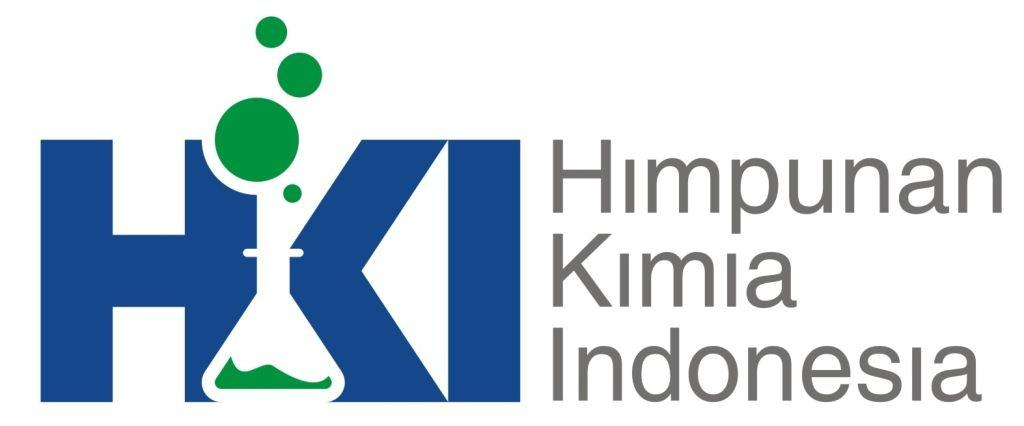Upgrading Crude Biodiesel dari Minyak Goreng Bekas menggunakan Katalis H-Zeolit
Abstract
Crude biodiesel hasil transesterifikasi minyak goreng bekas dapat ditingkatkan kualitasnya melalui proses catalytic cracking menggunakan zeolit alam. Penelitian ini bertujuan untuk menentukan kondisi optimum proses catalytic cracking dan sifat fisika dan kimia biofuel yang dihasilkan. Reaksi dijalankan dalam reaktor dengan memvariasikan waktu (1, 2 dan 3 jam), konsentrasi katalis (3, 5 dan 7 %), ukuran partikel katalis (180, 250 dan 630μm) dan suhu reaksi (325, 350 dan 375°C). Kondisi optimum proses catalytic cracking crude biodiesel didapatkan pada : waktu 3 jam, konsentrasi katalis 7%, ukuran partikel katalis 180 μm dan suhu reaksi 375°C. Biofuel yang dihasilkan mengandung 6,26% fraksi bensin(C5-C11); 17,6% kerosin (C12-C15), 47,73% biodiesel (C16-C20) dan asam lemak 28,4%. Analisis sifat fisik menunjukan densitas 0,9631g/mL, titik tuang 12°C, titik nyala 49°C dan angka oktan 72,6.
Kata kunci: catalytic cracking, crude biodiesel, angka oktan, biofuel.
Crude biodiesel from transesterification of used cooking oil can be improved in quality through catalytic cracking using natural zeolite. This study aims to determine the optimum conditions for catalytic cracking and the physical and chemical properties of biofuels produced. The reaction was carried out in the reactor by varying the time (1, 2 and 3 hours), catalyst concentration (3, 5 and 7%), catalyst particle size (180, 250 and 630 μm) and reaction temperature (325, 350 and 375°C) . The optimum conditions for the catalytic cracking crude biodiesel process were obtained at: 3 hours, 7% catalyst concentration, catalyst particle size 180 μm and reaction temperature 375 ° C. The resulting biofuel contains 6.26% gasoline fraction (C5-C11); 17.6% kerosene (C12-C15), 47.73% biodiesel (C16-C20) and fatty acids 28.4%. Physical properties analysis showed density of 0.9631g/mL, pour point 12°C, flash point 49°C and octane number 72.6.
Keywords: Catalytic cracking, crude biodiesel, octane number, biofuel.
References
ASTM D2699 - 17. 2017. Standar Test Method for Research Octane Number of Spark-Ignition Engine Fuel.
ASTM D93 - 80. 1980. Standar Test Methods for Flash Point.
ASTM D97-87. 1987. Standar Tes Method for Pour Point of Petroleum Oils.
ASTM D976 - 80. 1990. Standard Test Methods for Calculated Cetane Index of Distillate Fuels.
Bhatia S, Heng J K, Lim M L, Mohamed A R. 1998. Bio-fuel by Catalytic Cracking of Palm Oil: Performance of Different Catalysts, in Proceedings of the Biofuel. In PORIM International Biofuel and Lubricant Conference. Malaysia.
Budiawan M A, Wega T, Yoga P, Erna F, Syafitri H, Nugroho A. 2011. Karakterisasi dan Uji Aktivitas Katalitik Zeolit Alam Indonesia pada Hidrorengkah Ban Bekas dengan Preparasi Sederhana. In Prosiding Seminar Nasional Kimia Unesa.
Chang R. 2010. Chemistry 10th ed. In Chemistry. Jakarta: Erlangga
Dyer A, Las T, Zubair M. 2000. The use of natural zeolites for radioactive waste treatment: Studies on leaching from zeolite/cement composites. Journal of Radioanalytical and Nuclear Chemistry, 243(3), 839–841.
Hidayanti S, Yelmida, Zultiniar. 2015. Perengkahan Katalitik PalmFatty Acid Distillate (PFAD) Menghasilkan Biofuel Menggunakan Katalis Abu Tandan Kosong Sawit (TKS) dengan Variasi Temperatur dan Kecepatan Pengadukan. Jurnal Online Mahasiswa (JOM) FTEKNIK, 2(2).
Idem R O, Katikaneni S P R, Bakhshi N N. 1996. Thermal Cracking of Canola Oil: Reaction Products in the Presence and Absence of Steam. Energy & Fuels, 10(6), 1150–1162.
Lestari D Y. 2010. Kajian Modifikasi dan Karakterisasi Zeolit Alam dari Berbagai Negara. In Prosiding Seminar Nasional Kimia dan Pendidikan Kimia 2010.
Li L, Ding Z, Li K, Xu J, Liu F, Liu S, Yu S, Xia C, Ge X. 2016. Liquid hydrocarbon fuels from catalytic cracking of waste cooking oils using ultrastable zeolite USY as catalyst. Journal of Analytical and Applied Pyrolysis, 117, 268–272.
Maher K D dan Bressler D C. 2007. Pyrolysis of triglyceride materials for the production of renewable fuels and chemicals. Biosource Technology, 98, 2351–2368.
Melero J A, García A, Clavero M. 2011. Production of biofuels via catalytic cracking. Handbook of biofuels production (Vol. 5). Woodhead Publishing Limited.
Water Filtration System. Jurnal Kimia Valensi, 3(2), 129–137.
Reddy J K, Motokura K, Koyama T, Miyaji A, Baba, T. 2012. Effect of morphology and particle size of ZSM-5 on catalytic performance for ethylene conversion and heptane cracking. Journal of Catalysis, 289, 53–61.
Sari D K, Sundaryono A, Handayani D. 2017. Uji Biofuel Hasil Perengkahan Metil Ester dari Limbah Cair Pabrik Minyak Kelapa Sawit dengan Katalis MoNi/HZ. Jurnal Pendidikan Dan Ilmu Kimia, 1(2), 127–131.
Sirajudin N, Jusoff K, Yani S, Ifa L, Roesyadi A. 2013. Biofuel production from catalytic cracking of palm oil. World Applied Sciences Journal, 26, 67–71.
Sundaryono A, HandayaniD, Budiman Winda S. 2015. Perengkahan Katalitik Metil Ester dari Minyak Limbah Cair Pabrik Minyak Kelapa Sawit dengan Katalis Cr/Mo/HZA dan Ni/Mo/HZA. Jurnal Teknologi Industri Pertanian, 25(1), 78–84.
Taufiqurrahmi N dan Bhatia S. 2011. Catalytic cracking of edible and non-edible oils for the production of biofuels. Energy & Environmental Science, 4(4), 1087.
Wako F M, Reshad A S, Bhalerao, M. S., Goud, V. V. 2018. Catalytic cracking of waste cooking oil for biofuel production using zirconium oxide catalyst. Industrial Crops and Products, 118, 282–289.
Weinert A, Bielansky P, Reichhold A. 2012. Upgrading Biodiesel into Oxygen-Free Gasoline : New Applications for the FCC-Process, 1(January), 147–152.
Zhang H, Xiao R, Huang H, Xiao G. 2009. Comparison of non-catalytic and catalytic fast pyrolysis of corncob in a fluidized bed reactor. Bioresource Technology, 100(3), 1428–1434.
DOI: 10.15408/jkv.v5i1.10493
Refbacks
- There are currently no refbacks.
Copyright (c) 2019 Isalmi Aziz, Muhammad Akbar Tafdila, Siti Nurbayti, Lisa Adhani, Wahyu Permata

This work is licensed under a Creative Commons Attribution-ShareAlike 4.0 International License.

